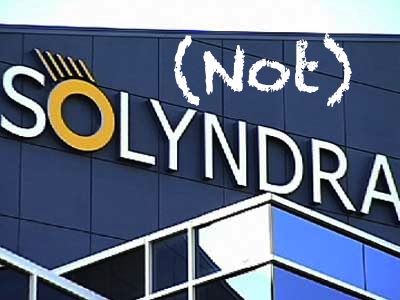As Americans get bombarded with political news surrounding the bankruptcy and failed loan guarantee of Solyndra, the negative publicity is spilling over to the entire solar industry, especially solar PV, but also to the solar thermal side.
As much as we are saddened to hear of any American solar company failing and laying off workers, the solar industry is not just one company. In fact, there are clear distinctions between Solyndra and the rest of the solar industry, but let’s focus on the solar thermal industry:
1) First, Solyndra created a proprietary solar electric PV (photo-voltaic) technology that produced electricity from the sun’s light.
Modern “solar thermal heating” or “solar water heating” or “solar hot water”—whatever you want to call it—is a 100-year-old technology that collects the sun’s heat and then produces hot water, hot air, or even cool air with additional technology.
2) Solyndra received a $500 million loan guarantee under what’s called the “1705 program” administered by the Department of Energy. The company used the money to build a new U.S. factory and improve its manufacturing process. Ultimately, Solyndra failed because producing their new product still cost too much and they couldn’t compete against the recent 50% price drop of traditional solar PV panels.
While there are different types of solar thermal panels, the technology and cost to make them are fairly stable. There are few innovations or the ability to reduce current labor costs. Free Hot Water’s solar collectors are made in Austria and America, and as a result, the panels have exceptional durability and quality, yet are still competitive with lower quality Chinese collectors.
3) The 1705 loan guarantee program has nothing to do with other existing incentives for solar hot water or solar electric systems. It should also be noted that this loan program has overall been successful. Soyndra’s default makes up only 2% of the Department of Energy’s loan portfolio and it is the only loan known to have gone bad.
American solar thermal companies like Free Hot Water –based in San Jose, California– have relied on private investments and loans to fund operations. Yes, the various state and federal incentive programs do help stimulate the solar thermal business, but this is nothing new. Far more lucrative incentives and policies have supported the gas, nuclear, ethanol, and oil businesses for decades. That the solar industry should be penalized for one failure is shortsighted. Solar energy is clean and can be collected for the next billion years or so in our own country, unlike fossil fuels that are dirty, dangerous, and will one day run out here and around the world.
So, Solyndra may have failed, but American politicians shouldn’t use the failure of one company as a way to delay the development and support of solar and other clean technologies. America has to support these emerging technologies now if we are to maintain our energy supply and modern Western lifestyles. Solar hot water has been and remains an excellent energy choice and its growth should continue to be supported by the public and our federal and local governments.






















Good article. While this advanced yet unproven and ultimately unviable technology did fail and was seemingly backed by a hurried and politically justified load program, there is no need to trash the whole industry. There are thousands of government sponsored loans for solar plants and farms which return solid percentages for their investors as well as the government. You don’t hear about them however because good news is not really interesting news.
Thanks for commenting, Dustin. I think it’s going to take time, but eventually, the press will move on from this.